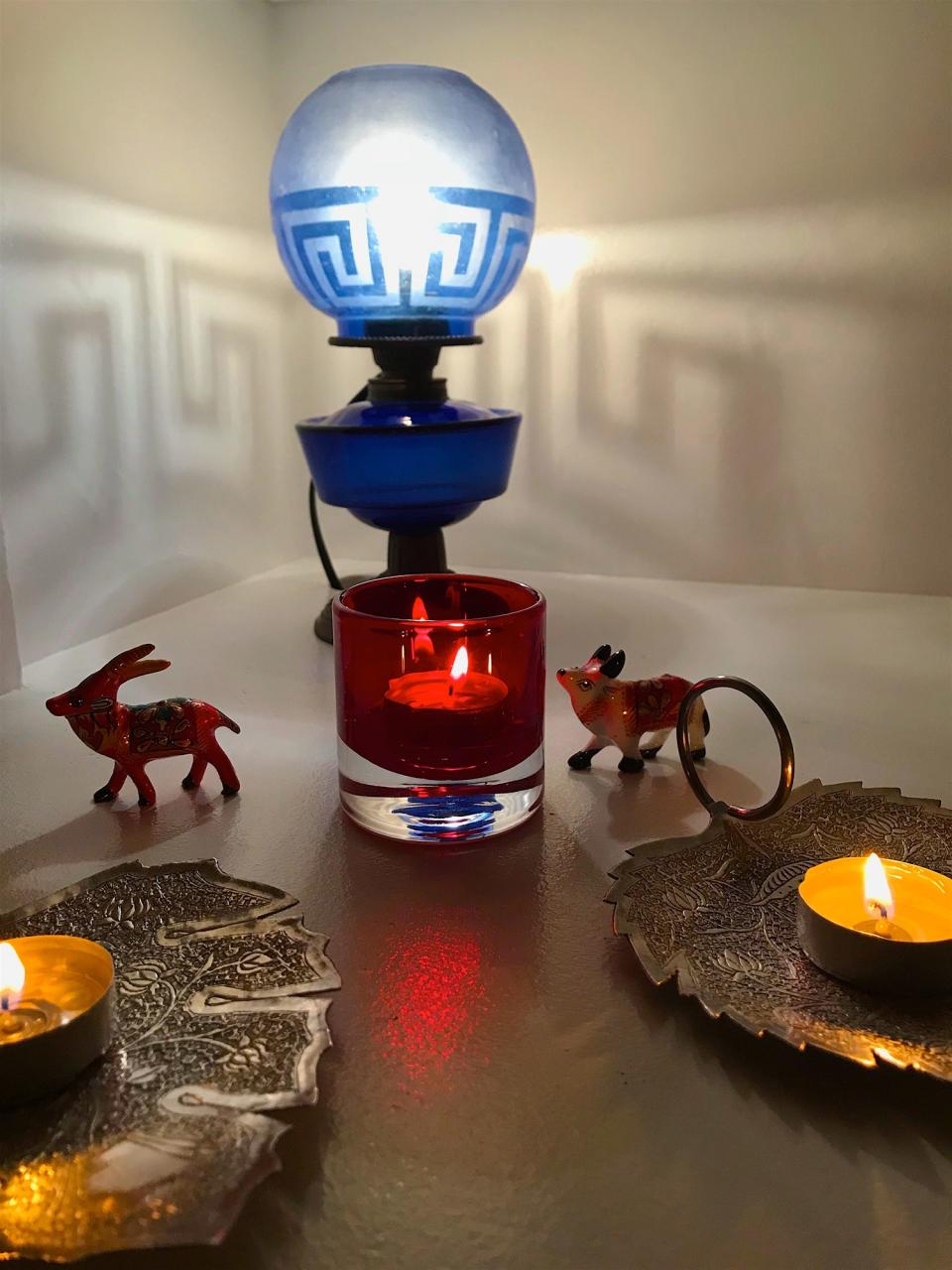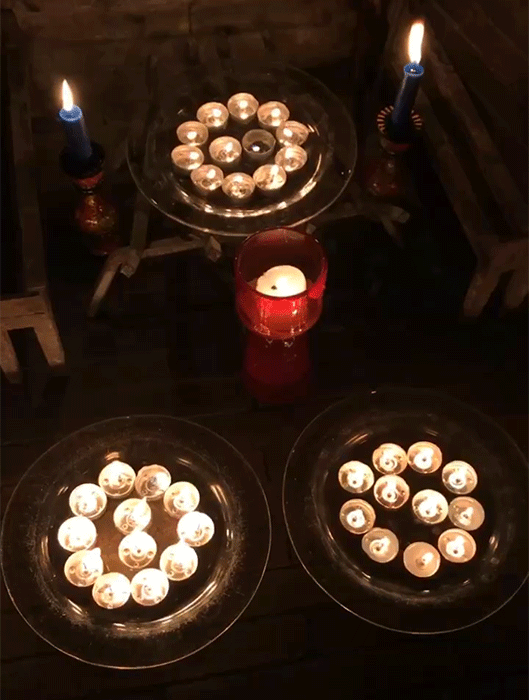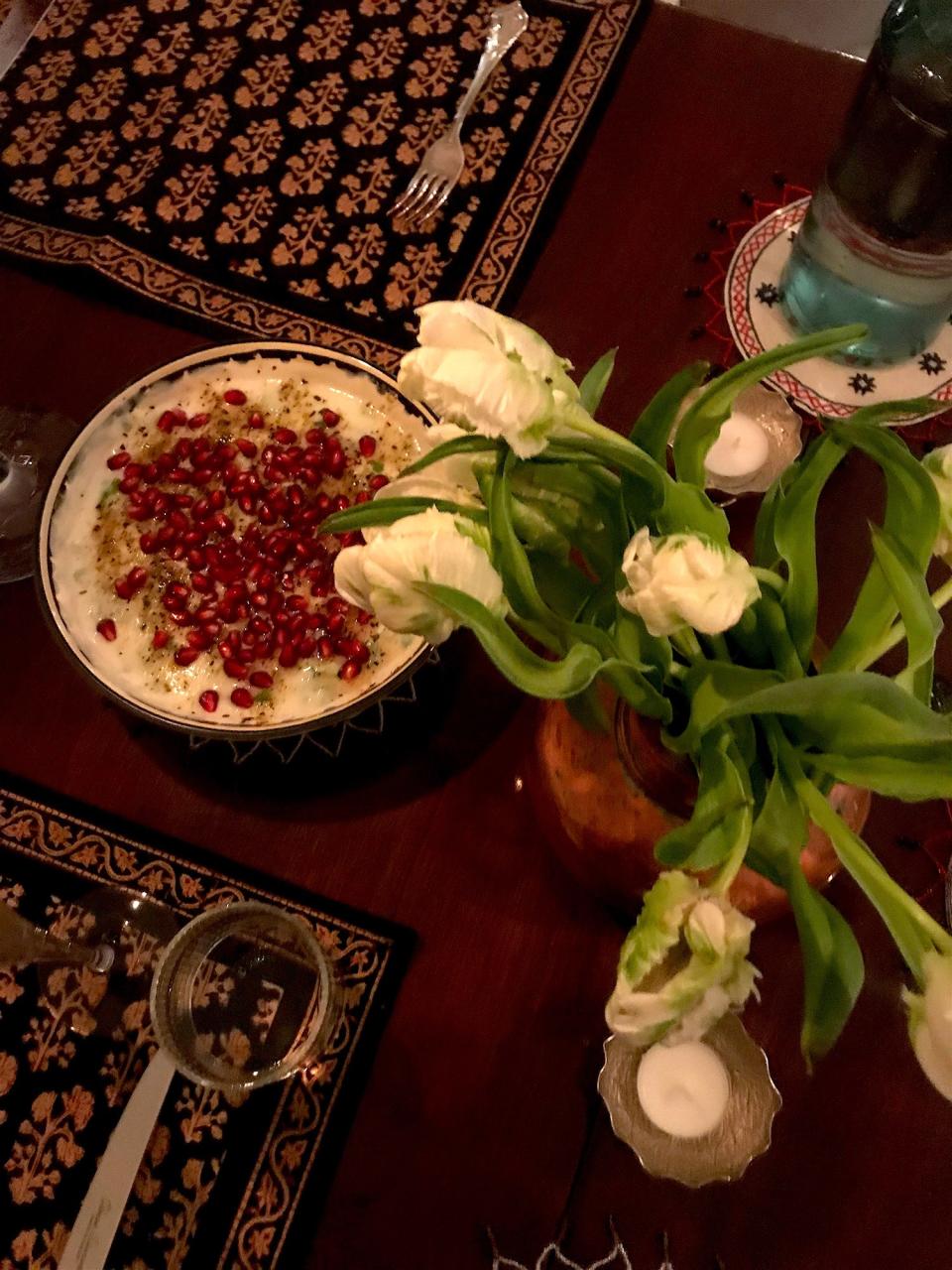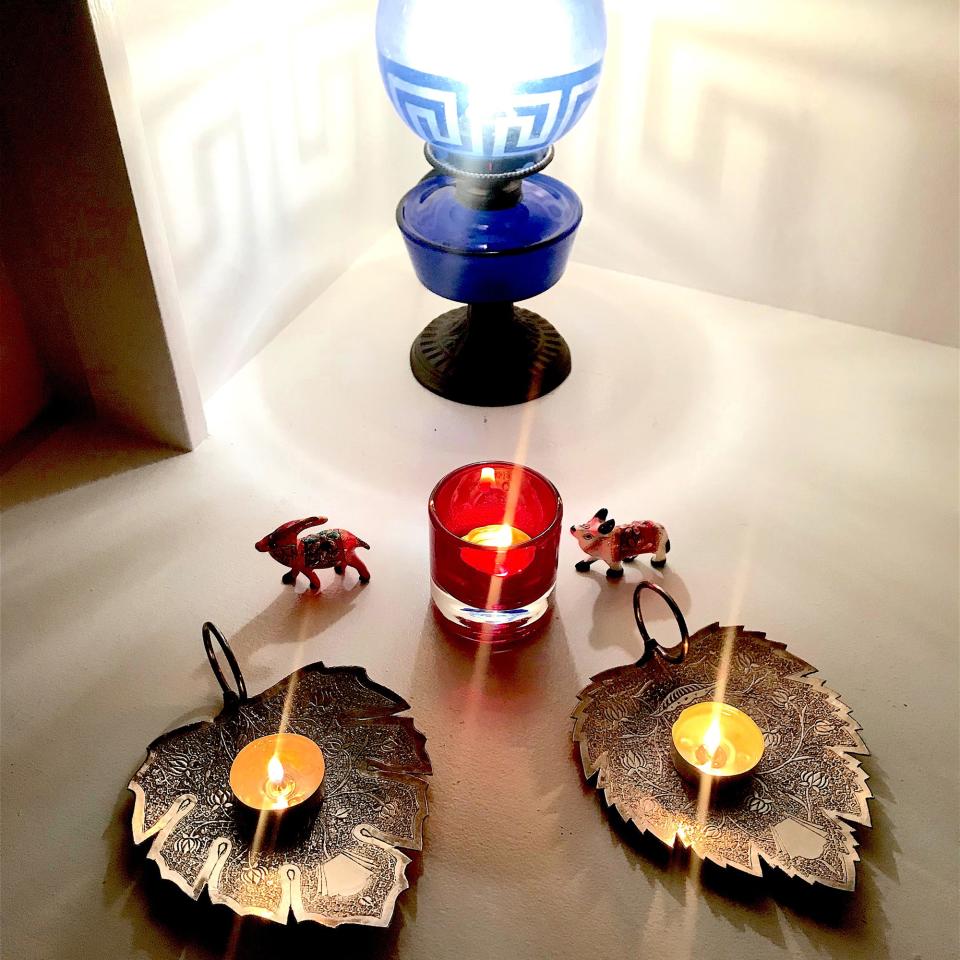Celebrating Diwali, in Light of the Midterms

I should tell you that I am not a religious person, nor is my family particularly beholden to any one faith, but every year, no matter where we are in the world, we celebrate Diwali.
It’s technically the Hindu festival of lights, born out of an ancient epic poem on the day the story’s protagonist hero, a demigod named Ram, finally returned to his kingdom after being exiled for many years by an especially cruel, ten-headed demon. Before his arrival, his constituents rigorously cleaned, made their homes beautiful, and, come nightfall, lined the path into the city with thousands of tiny, flickering candles. Aside from a warm welcome, the gesture signified their continued faith not only in Ram, but in the power of good, and its enduring ability to overcome evil.
In the mortal world, Diwali, which falls on a different day between October and November each year, is intended to serve in part as a spiritual palette cleanser between the close of one year and the start of another. On a material level, it offers a chance to rid the home of whatever unwanted things may have accumulated there—stray tufts of dirt, dust, bad energy—since January. It’s also just a really good excuse to clean with a vengeance for a few days. Homes are, after all, a reflection of their dwellers, and, to some degree, their margins of human error.
These preparations culminate on and for Diwali night, when many Indian cities are filled with their own hundreds of thousands of flickering lights, sourced from tiny clay oil lamps called diyas that collectively set the night sky ablaze. Festive attire is donned, family feasts are had, and fireworks and sparkler games carry on well into the early morning hours of the following day. Sadly the fanfare can't help but nod to our times: it was announced just yesterday that Delhi is once again the world's most polluted city, and the Diwali smog only adds to the problem. But I have always loved watching all that light engulf the black night—in New Delhi, where I grew up, we didn’t get many stars, and, over the dancing flames, even the most cynical person could be seduced into believing in the elusive idea of new beginnings.

That’s perhaps why this year’s Diwali date felt so ironic to me. After a difficult year in American politics (not to mention the rest of the world), the celebration fell, of all days, on November 7, the day after the midterm elections. It would be an understatement to say that I was anxious about celebrating a holiday dedicated to the belief that good ultimately always wins out over evil. 2018 has often been a testament to the powers of fear and divisiveness; a mass reckoning, across party lines. Gone are the days when I so innocently viewed the idea of face to face conversation and compromise as a silver bullet solution to partisan problems. When I look back now, what I really meant was: I think I can change their minds.
And so, after spending the weekend knocking on doors in New Jersey swing districts with Swing Left and maniacally reminding everyone in my phone to vote, I settled into my friend’s sofa on the evening of November 6th to watch the results roll in with the knowledge that, win or lose, I would be spending the following night filling every room of my aunts’ apartment with tea lights and raising a toast to an idea that I was officially exhausted by, and struggling to hold onto.
In the end, it was... a relief. A battle was won, and the war prevails. I was momentarily happy about the House results, but not thrilled, exactly; it was difficult to relish even in our accomplishments because of the losses of a few of the more compelling faces I’ve seen in a long time, all of whom seemed to restore energy, excitement, and dare I say it— hope—to the party, and to the future of the country. “It’s hope mongering!” I yelled to the fates (or at least, the TV), watching Andrew Gillum give his heartfelt concession speech, as Beto O’Rourke and Stacie Abrams were also presumably being told that they had come up short. As I wrestled with my emotional whiplash, I thought of Diwali the next day.
It’s not that every fraught feeling dissipated when I walked into my aunts’ apartment on the evening of November 7, but I was able to check the dark cloud hanging over my head at the door. I guess it wasn’t allowed in with all that light. Our New York celebrations employ little tea lights and votives from Crate & Barrel in place of clay diyas, and there were at least a hundred of them, grouped together on little glass plates, lighting up every surface. My brother and two closest friends were there, too, and we snacked on Kurkure, a spiced Indian corn puff snack, that my aunts had picked up in Little India, over glasses of prosecco. As the spice crackled across my tongue, I felt instantly cheered.

Dinner was a hit parade of Indian classics, beginning first with a simple base of white basmati rice and generous spoonfuls of black daal, steaming hot and fragrant from the added butter, onion, ginger, garlic and garam masala (a unique concoction of ground spices that includes, but isn’t limited to, black pepper, cardamom, cinnamon, cloves, coriander and nutmeg. The more the merrier, you get the idea). To this we added a dash of raita—a yogurt dish containing Julienned cucumbers, a little Himalayan black salt for umami, and embellished, that evening, with ruby red pomegranate seeds. The melting pot of flavors brought me right back to my Delhi Diwalis, which my parents and grandparents had celebrated only 12 hours earlier, there. We moved on to grilled shrimp, cooked in a coconut broth and a simple side of green beans dotted with mustard seed. Before dessert—a scoop of saffron sorbet nestled against another of pistachio, topped with an autumnal gingerbread wafer and leftover pomegranate seeds—my aunt asked everyone what they were excited about, in a larger, world-sense.
My original reply was half-hearted, but after hearing my friends and family's answers (space exploration; the food revolution; the faces of America becoming evermore diverse), I realized there was, in fact, a lot to be excited about: the House win, for one. The wonderful women we elected to Congress. The fact that some balance has been restored to our government, and that we won districts in unlikely places. And, less for the world and more for just me, future Diwalis, like this one.


